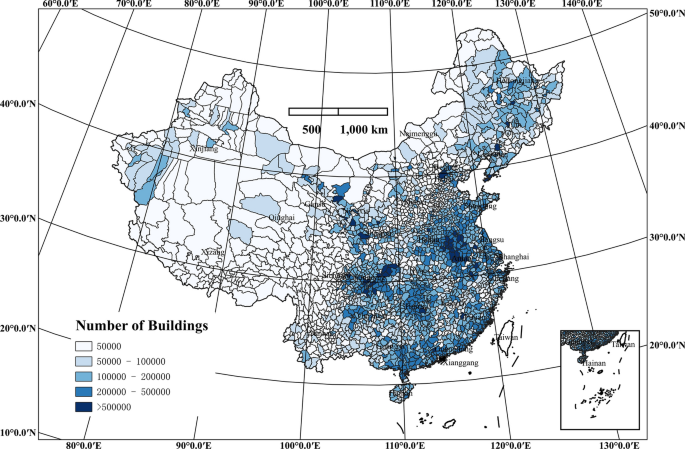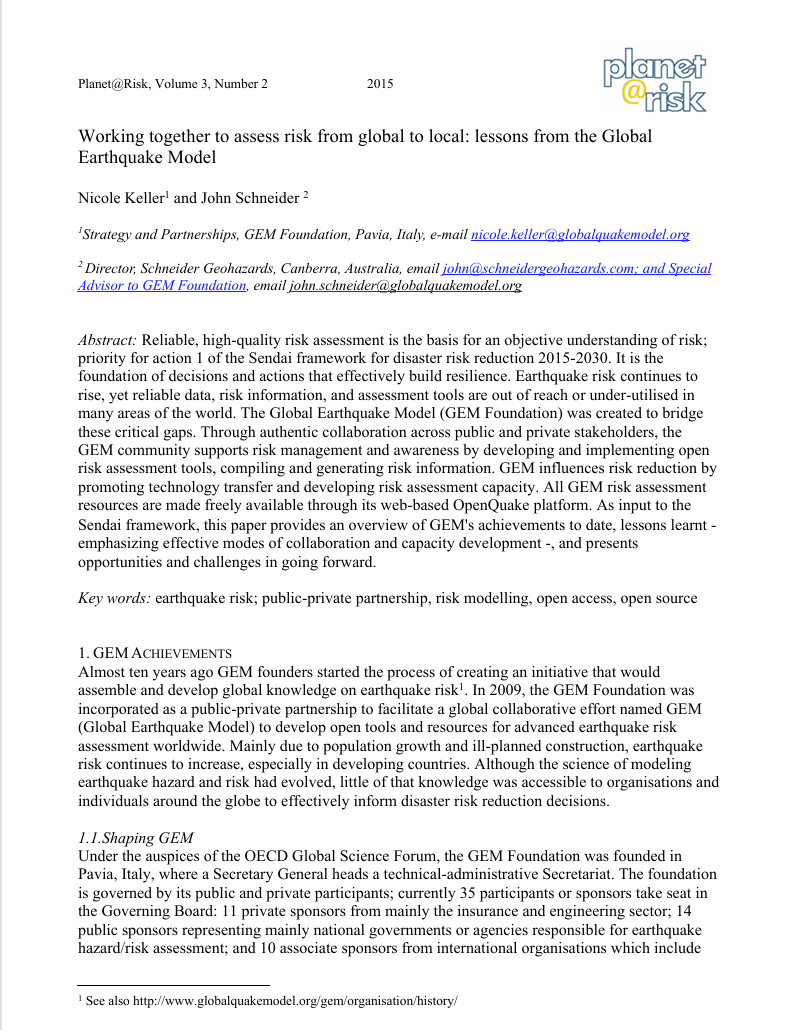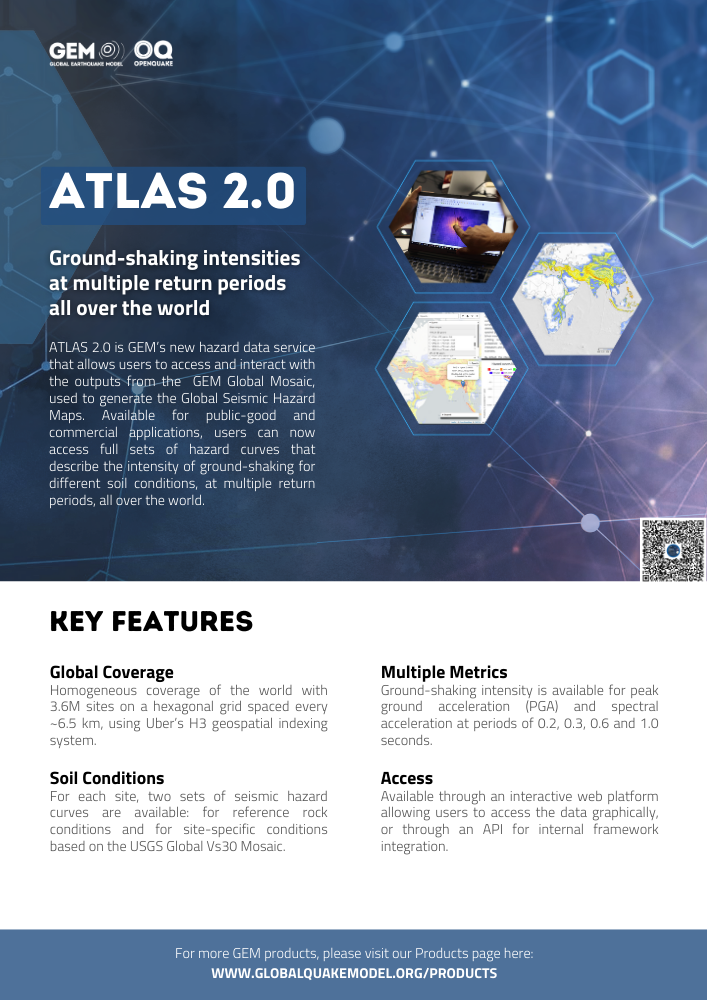top of page

Anchor 1
Publications List
Filters: 125 results found
Sort by Title:
Title | Year | Type | Topic |
|---|
Loading...
A township-level exposure model of residential buildings for mainland China
Type:
Peer-reviewed
The exposure model is a key component of a seismic risk model, which captures the spatial distribution of population and built assets along with their structural characteristics and valuation that are required for seismic risk assessment. Current and available exposure models for China have various limitations that make them less suitable for use in risk assessment, including low spatial resolution of building inventory and the limited identification of key structural characteristics. This study describes the development of a residential buildings’ township-level exposure model for mainland China, containing information about the geographical distribution, structural characteristics, age, ductility, number of stories, number of dwellings, average built-up area, and replacement cost at the township level. This exposure model is intended to be used for risk assessment and to support emergency planning, risk management, and decisions. The geographical distribution’s detailed analysis of the building typologies, heights, and construction vintage at the national, regional, and provincial levels is provided to better aid in understanding country exposure. The results indicate that based on the method, flow, and data from the 6th National Population Census of the People's Republic of China, we can generate key information used for seismic risk analysis, representing a significant step toward a better understanding of risk due to seismic hazards in mainland China.
Seismic Risk Model for the
Beijing–Tianjin–Hebei Region, China-Considering Epistemic Uncertainty from the Seismic Hazard Models
Type:
Peer-reviewed
This study presents a probabilistic seismic risk model for the Beijing–Tianjin–Hebei region in China. The model comprises a township-level residential building exposure model, a vulnerability model derived from the Chinese building taxonomy, and a regional probabilistic seismic hazard model. The three components are integrated by a stochastic event-based method of the OpenQuake engine to assess the regional seismic risk in terms of average annual loss and exceedance probability curve at the city, province, and regional levels. The novelty and uniqueness of this study are that a probabilistic seismic risk model for the Beijing–Tianjin–Hebei region in China is developed by considering the impact of site conditions and epistemic uncertainty from the seismic hazard model.
Unveiling the
Environmental Impact of Earthquakes in Europe
Type:
Peer-reviewed
Environmental impact assessments in the construction sector often overlook the significant effects of natural hazards, in particular earthquakes. These destructive events pose severe sustainability challenges as they frequently require large-scale repairs and replacement for damaged buildings, demanding the production and use of substantial quantities of building materials. Here, we unveil the environmental toll of earthquakes in Europe, presenting essential environmental data on the continent’s building stock. We further generate novel seismic risk maps that quantify the embodied carbon resulting from seismic-damage repair and reconstruction of residential, commercial, and industrial buildings, considering all plausible earthquake scenarios across the region. To this end, we first develop a comprehensive database of material quantities and embodied carbon factors for a broad range of construction materials and building components. This database serves as a crucial input for a continent-wide probabilistic seismic risk model, which estimates the potential environmental impacts of future earthquakes by analysing over 3 million realistic damage scenarios, each with its own probability of occurrence. Our findings reveal that Europe’s earthquake-exposed building stock embodies nearly 13.4 billion tons of carbon dioxide equivalent (CO2e), with seismic damage alone generating more than 6.4 million tons of CO2e annually; comparable to the emissions of 32,000 one-way flights from Paris to New York carrying 200 passengers. Our models not only establish critical benchmarks for the carbon footprint of the European construction sector, but also offer a versatile tool for assessing the impacts of other natural hazards, driving sustainable disaster risk mitigation and fostering more resilient, eco-friendly built environments.
Probabilistic seismic hazard analysis for the Dominican Republic
Type:
Peer-reviewed
The Dominican Republic experiences moderate to high seismic hazard mostly caused by oblique convergence at the Caribbean/North American plate boundary that manifests as subduction zones, less-pronounced subduction-like trenches with thrust faulting, long strike-slip faults parallel to the plate boundary, and onshore deformation. Historical earthquakes have damaged the Dominican Republic’s large cities and those in neighboring Haiti, once requiring relocation. Given this, the Dominican Republic joined the “Training and Communication for Earthquake Risk Assessment” (TREQ) project funded by the United States Agency for International Development, which aimed to increase earthquake risk assessment capacity in Latin American cities. The TREQ project was the basis for developing an openly available probabilistic seismic hazard model for the Dominican Republic. The input model was developed from two main datasets: a homogenized earthquake catalog and an active faults database that combines results of recent local projects with a global database. The seismic source characterization used these to constrain source geometries and occurrence rates for active shallow crustal earthquakes, subduction interfaces and subduction-like thrusts, and intraslab earthquakes. Shallow crustal earthquakes, including those on subduction-like thrusts, are modeled by smoothed seismicity and fault sources, the latter using pre-defined geometries that permit multi-fault ruptures. Seismicity on the Puerto Rico Trench subduction interface is modeled as a fault source, while intraslab sources use pre-defined gridded ruptures inside the intraslab volume. The source characterization applies epistemic uncertainties to modeling assumptions affecting occurrence rates and maximum magnitudes. The ground motion characterization used residual analyses from past regional projects as a basis, updating some components with more recent ground motion models. Computed hazard results reinforce those from recent studies in terms of geographical hazard patterns and levels. For 475-year return periods, peak ground acceleration (PGA) in Santiago de los Caballeros reaches 0.50 g, controlled by the Septentrional Fault, while all tectonic region types contribute to the PGA 0.31 g computed for Santo Domingo.
A brief overview of the past, present and future of the Global Earthquake Model (GEM) Foundation
Type:
Peer-reviewed
The Global Earthquake Model (GEM) is an initiative that originally emerged from discussions and
proposals made by the Global Science Forum of the Organization for Economic Co-operation and
Development (OECD) in the early 2000’s. In 2009, GEM established itself as a non-profit legal entity,
the GEM Foundation, and 15 years later, it continues to operate globally with a mission to provide
transparent resources for seismic hazard and risk assessment, as well as to support disaster risk
reduction for a wide range of natural hazards. This paper highlights the main milestones from the
past 15 years and the vision of the foundation to 2030. An overview is also provided of the status
of GEM products and services, all of which are made available for the benefit of society, under a
strategy that aims to assure the continued financial sustainability of the organization.
Strain partitioning in the Southeastern Tibetan Plateau from kinematic modeling of high-resolution Sentinel-1 InSAR and GNSS
Type:
Peer-reviewed
Fault slip rates estimated from geodetic data are being integrated into seismic hazard models. The standard approach requires modeling velocities and relative (micro-)plate motions, which is challenging for fault-based models. We present a new approach to directly invert strain rates to solve for slip rates and distributed strain simultaneously. We generate velocity and strain rate fields over the southeastern Tibetan Plateau, utilizing Sentinel-1 Interferometric Synthetic Aperture Radar data spanning 2014–2023. We derive slip rates using block modeling and by inverting strain rates. Our results show a partitioning between localized strain on faults and distributed deformation. The direct inversion of strain rates matches the geodetic data best when incorporating distributed moment sources, accounting for a similar proportion to on-fault sources. The direct strain methodology also aligns best with the independent geological slip rates, especially near fault tips. As high-resolution strain rate fields become increasingly available, we recommend direct inversion as the preferred practice.
Advancing the Understanding of Earthquake Risk in Portugal
Type:
Peer-reviewed
The assessment of earthquake risk at the national scale is crucial for the design and implementation of risk reduction measures. Due to its location in the southwest of the Eurasian plate, Portugal is exposed to moderate to strong seismic events, such as the well-known 1755 Lisbon earthquake. We reviewed existing studies covering exposure, seismic hazard, vulnerability, and risk assessment for Portugal, and performed probabilistic seismic hazard and risk analyses for the country using new model components. These include a new exposure model developed for the residential building stock using the 2021 national Building Census Survey, a recent exposure model for commercial and industrial buildings, updated vulnerability functions for 116 building classes, and the recently released European Probabilistic Seismic Hazard model. The seismic risk results include average annual economic losses, fatalities, buildings with complete damage, and population left homeless. These results allowed the identification of the regions in Portugal with the highest earthquake risk, as well as which building classes contribute the most to the overall impact.
Empirical fragility curves for houses in Chile using damage data from two earthquakes
Type:
Peer-reviewed
Strong seismic events frequently strike Chile. The last three significant events that caused considerable damage and losses are the 2010 (
8.8, Maule), 2014 (
8.2, Iquique), and 2015 (
8.3, Illapel) earthquakes. Therefore, reliable fragility curves are necessary to evaluate the threat of earthquakes to the built environment. This study aims to develop empirical fragility curves of Chilean houses using damage from the 2014 and 2015 earthquakes. The data from 9085 and 7431 damaged houses from the 2014 and 2015 earthquakes, respectively, was obtained by the government. The fragility curves were estimated for reinforced concrete, reinforced masonry, timber, and adobe houses. Additionally, the fragility curves were constructed using three different Peak Ground Acceleration (PGA) maps to quantify the variation of the fragility parameters based on the selected PGA map and to identify which PGA map generates the highest correlation with observed damage. Additionally, fragility curves obtained in this study are compared with curves from other studies. The median
values of the fragility curves obtained in this study are larger than those from other reported studies.
Working together to assess risk from global to local: lessons from the Global Earthquake Model
Type:
Peer-reviewed
Reliable, high-quality risk assessment is the basis for an objective understanding of risk; priority for action 1 of the Sendai framework for disaster risk reduction 2015-2030. It is the foundation of decisions and actions that effectively build resilience. Earthquake risk continues to rise, yet reliable data, risk information, and assessment tools are out of reach or under-utilised in many areas of the world. The Global Earthquake Model (GEM Foundation) was created to bridge these critical gaps. Through authentic collaboration across public and private stakeholders, the GEM community supports risk management and awareness by developing and implementing open risk assessment tools, compiling and generating risk information. GEM influences risk reduction by promoting technology transfer and developing risk assessment capacity. All GEM risk assessment resources are made freely available through its web-based OpenQuake platform. As input to the Sendai framework, this paper provides an overview of GEM's achievements to date, lessons learnt - emphasizing effective modes of collaboration and capacity development -, and presents opportunities and challenges in going forward.
This paper is from the Global Risk Forum Davos Planet@Risk Journal, which is no longer available.
ATLAS 2.0: Ground-shaking intensities at multiple return periods all over the world
Type:
Brochure
ATLAS 2.0 is GEM’s new hazard data service that allows users to access and interact with the outputs from the GEM Global Mosaic, used to generate the Global Seismic Hazard Maps. Available for public-good and commercial applications, users can now access full sets of hazard curves that describe the intensity of ground-shaking for different soil conditions, at multiple return periods, all over the world.
bottom of page















